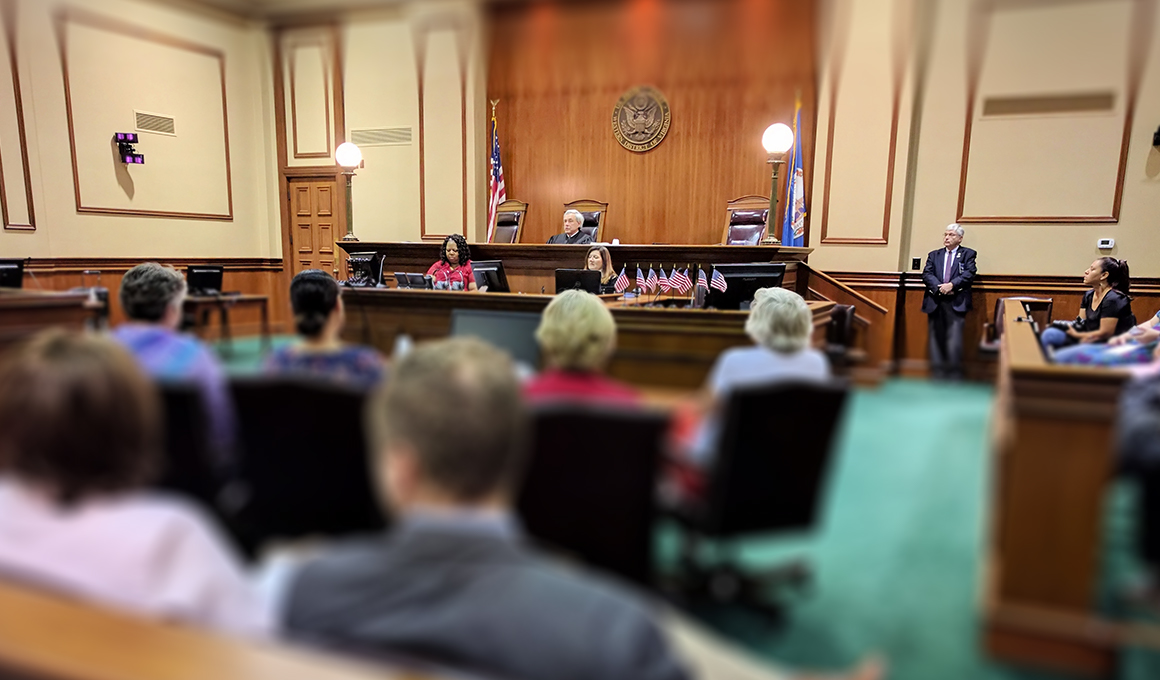Exactly How Test Presentations Enhance Your Disagreement and Convince Jurors
Trial presentations serve as a pivotal mechanism for enhancing legal debates and encouraging jurors. By incorporating aesthetic aids, narrative structures, and emotional engagement, lawyers can develop an engaging instance that reverberates on several levels. The tactical use of visuals not only clarifies intricate details however likewise captures jurors' attention better than words alone. Nonetheless, the art of narration plays a similarly important function in transforming valid proof into an engaging story, shaping jurors' perceptions - trial presentations. Recognizing these aspects can considerably impact test results, raising the inquiry of just how each element adds to this elaborate dynamic.

Relevance of Visual Help
Aesthetic help play a vital function in improving the performance of test presentations, as they can dramatically enhance target market engagement and retention of information. In the context of a test, where jurors are tasked with handling facility info, aesthetic aids offer to simplify and clear up essential factors. Graphes, charts, and pictures can convey information and ideas that might or else overwhelm or puzzle jurors, allowing for an extra simple understanding of the evidence provided.
Moreover, aesthetic aids aid in preserving juror attention throughout the procedures. By damaging the monotony of spoken testimony, these tools can stress crucial debates, making them much more remarkable. Effective visual help can additionally evoke psychological responses, which can be critical in encouraging jurors to align with the presenter's story.

Crafting Compelling Stories
A compelling story is important in test presentations, as it acts as the backbone of efficient persuasion. It allows attorneys to weave with each other facts, proof, and emotional aspects into a systematic story that resonates with jurors. This narrative framework enables jurors to comprehend the intricacies of the instance while directing them via the lawyer's debate.
To craft an engaging narrative, lawyers ought to concentrate on clarity and comprehensibility. This entails establishing a clear lead character-- usually the client-- and detailing their journey with the occasions in concern. Providing the realities in a logical series boosts comprehension and preserves engagement. Furthermore, the usage of vibrant descriptions can develop mental pictures that assist jurors picture the occasions, making the story a lot more remarkable.
Moreover, integrating essential styles throughout the presentation strengthens the core message and aids in retention - trial presentations. The narrative ought to not only convey information yet additionally stimulate a sense of justice, highlighting the risks involved. Inevitably, a sound story fosters a connection between the jurors my latest blog post and the case, positioning the lawyer's disagreement as both trustworthy and engaging, consequently enhancing the possibility of a beneficial decision

Engaging the Court Mentally
Efficient jury engagement depends upon the attorney's capacity to link with jurors on an emotional level. This link can substantially impact jurors' understandings and their ultimate decision-making. Making use of emotional charms permits attorneys to humanize the instance, transforming abstract lawful concepts into relatable experiences. By offering real-life stories or endorsements, attorneys can stimulate compassion and empathy, cultivating a deeper understanding of the problems at stake.
Aesthetic help, such as pictures or videos, can additionally boost emotional engagement, supplying jurors with dazzling representations of the case's human aspects. Crafting a story that highlights the struggles and victories of the individuals included makes certain that jurors see beyond the legal disagreements and identify the human effects of their decisions.
Furthermore, tone and body language play a critical role in conveying emotion. An attorney's passionate shipment can resonate with jurors, strengthening their emotional investment in the situation. It's vital to stabilize sob stories with accurate proof, making sure that jurors really feel forced to act while continuing to be based in the fact. Inevitably, a psychologically involved court is more probable to be convinced, making emotional connection a vital component of reliable test discussions.
Structuring Your Presentation

The body of the discussion must be realistically segmented right into essential points, each sustained by compelling proof. It is useful to use storytelling strategies to weave truths right into a story that jurors can easily adhere to. Visual help, such as charts and video clips, can improve comprehension and involvement, helping to highlight critical pieces of proof.
Real-World Situation Studies
Taking a look at real-world situation research studies supplies vital understandings into the art of trial discussions and persuasion. The protection group efficiently utilized a method that incorporated high-profile expert testimonies with multimedia presentations, which mesmerized jurors and eventually affected their choice.
One more remarkable instance is the "McDonald's Coffee Instance," where the complainant's lawyers made use of visuals photos of the injuries received by Stella Liebeck. trial presentations. This raw aesthetic proof played an essential role in conveying the severity of her burns, resulting in a significant jury award. Such cases show that impactful test discussions commonly depend upon the efficient combination of visuals and storytelling to evoke psychological article reactions from jurors
Additionally, the "Casey Anthony Trial" highlighted the importance of narrative comprehensibility and credibility. The prosecution's failing to develop a compelling timeline decreased their persuasive power, emphasizing the need of a well-structured presentation. Evaluating these cases discloses that effective trial discussions need tactical planning, psychological interaction, and the ability to anonymous reverberate with jurors' worths and beliefs.
Verdict
Trial presentations significantly improve debates and convince jurors via the tactical usage of visual help, compelling narratives, and psychological engagement. A well-structured presentation equilibriums emotional allures with accurate proof, ultimately resonating with jurors' worths.
Comments on “Legal teams rely on powerful trial presentations for courtroom success.”